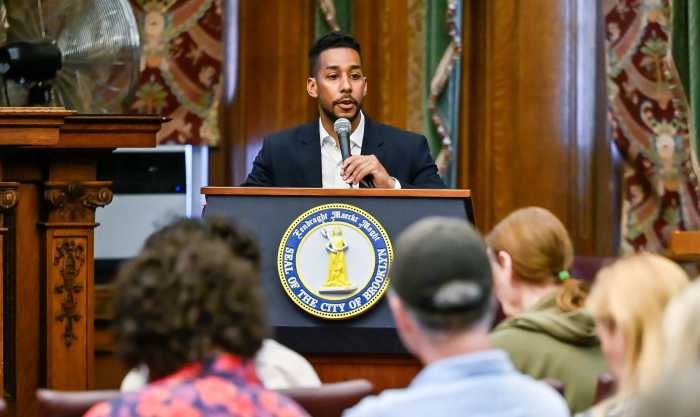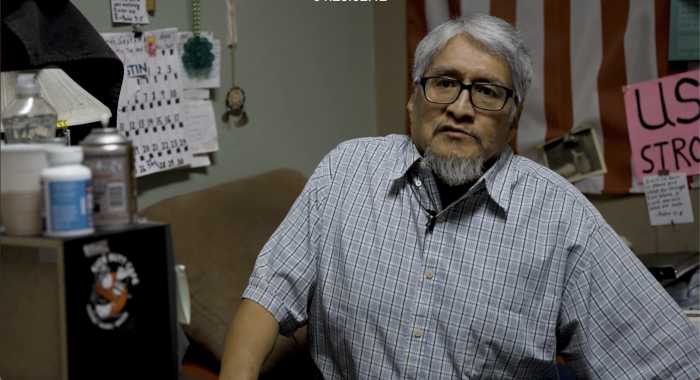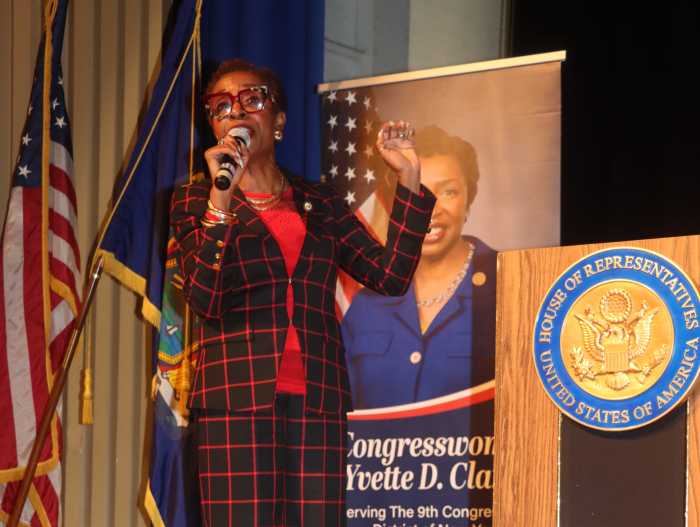At least one resident attended the town hall meeting to complain about something that the mayor can’t directly fix: the G train.
“It’s overcrowded to the point where people can’t get on, which was unthinkable a few years ago,” said Community Board 1 Transportation Committee Chairwoman Teresa Toro.
G-train ridership has exploded from 8.6 million in 1995 to 12.6 million in 2006, according to the Real Deal, which said poor G service is depressing real-estate values in up-and-coming Greenpoint.
Toro said G-train service was not only suffering because of increased ridership, but also because two cars on every G train were removed in 2001, cutting trains down to only four cars.
“It may seem like a small difference, but while with six cars there was no overcrowding, with four cars there now is,” she Toro said.
Since the Metropolitan Transportation Authority is not a mayoral agency, Bloomberg shrugged, but promised to look into the problem.
“I’ll call [MTA Executive Director] Lee Sander,” the mayor promised, joking, “He’s new on the job, so we can blame him for all the problems of the past.”
Bloomberg also mentioned that he’d mention it to Gov. Spitzer the next time the two speak.
Greenpoint straphangers shouldn’t hold their breath waiting for anyone in the Bloomberg Administration to find their G spot. The mayor has only four appointees on the MTA’s 17-member board.
And, frankly, service on the G train isn’t that bad, according to the independent Straphangers Campaign.
The New York Public Interest Research Group project found that commuters could get a seat on the G train during rush hour 84 percent of the time — far better than the 48-percent citywide average.

























